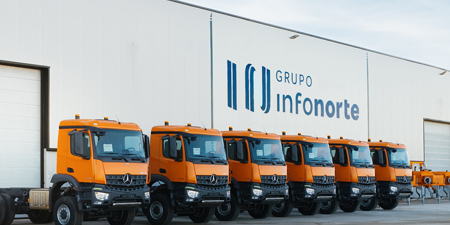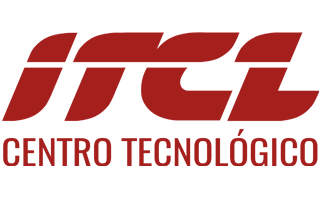
Infonorte – Dynamic inductive and hydrogen charging based on renewable sources
A technological solution based on the development of an electric vehicle charging system using hydrogen from renewable sources. The system includes dynamic inductive charging on the road, allowing for in-motion charging of electric vehicles, particularly heavy goods vehicles.
ARTIFICIAL VISION / ENERGY / SENSOR TECHNOLOGY
INDUSTRIAL PROBLEM STATEMENT
The current situation of electric mobility in Spain reveals a predominantly combustion vehicle fleet, although the sale of low-emission and electric vehicles is increasing. This growth is mainly occurring in large cities where there is a clear demand for CO2 emission reductions and where there are advantages for accessing central areas to encourage their use.
Despite Spain’s progress in adopting electric vehicles, there is a significant need for a charging infrastructure where the energy supply is predominantly renewable and sustainable. Therefore, developing a charging infrastructure is crucial for the integration of electric vehicles, especially in the case of heavier vehicles intended for transporting goods or people (trucks, buses, transport vehicles).
The main issue with electric trucks is their range, as they need to travel between 600 and 700 kilometers daily. In the worst-case scenario, a 1 MWh battery would be required to cover these distances.
SOLUTION
The CARDHIN solution has demonstrated that it is possible to reduce the number of times a heavy vehicle needs to stop to charge (increasing productivity, reducing delivery times, etc.), and at the same time, reduce the size of its battery thanks to dynamic inductive charging, that is, charging the vehicle while it is in motion.
A dynamic inductive charging system has been developed for the road using technologies along with a receiver capable of dynamic inductive charging according to the regulatory and technical requirements, specifications, and needs of the roads.
The study on the H2 energy support, obtained directly from renewable sources, highlights how it will reduce the environmental impact of the electrification of all highways and motorways in the future.
Specifically, CARDHIN has worked on:
- Defining regulatory limits, best practices to consider, and other requirements for electric vehicles to use dynamic inductive technology.
- Investigating the interfaces between vehicles and roads for optimal energy transmission by induction.
- Improving the performance of wireless energy transfer systems.
- Enhancing the safety of wireless systems against electromagnetic radiation.
- Optimizing the dynamic charging process.
- Integrating all available measures into an interface that assesses the capabilities of the charging infrastructure.
IMPLEMENTATION
INFONORTE, in collaboration with ITCL, has investigated and developed the following activities:
1- Analysis of efficiency and weight distribution optimization.
2- Research on VE-ROAD electromechanical interfaces.
3- Research on HMI for electric vehicles in the context of electric roads.
4- Research on VE-ROAD electromechanical interfaces.
5- Design of communication architecture involving sensors, actuators, and automation systems that will equip the electric vehicle, as well as communication types with the charging infrastructure environment.
6- Design of control systems for the receiver.
7- Design and development of the HMI application.
ROLE OF ITCL
ITCL, in collaboration with INFONORTE, was responsible for developing the vehicle communication architecture necessary to achieve the proposed objectives. ITCL also conducted the study on integrating the different systems involved in the Dynamic Inductive Charging prototype, establishing the communication architecture that will centralize data from the involved systems into a database. Additionally, ITCL designed the control system for the receiver’s approach to the road, supported by the HMI system for the driver.
ACHIEVED IMPROVEMENT
- Design and development of the HMI application: Development of an HMI interface that allows the driver to perform necessary actions to monitor system status and proceed with inductive vehicle charging in a user-friendly and intuitive manner.
- Various alternatives for mounting and positioning receiver coils: Verification of the designed system for mounting and positioning coils, evaluating potential scenarios and strategies for different vehicles based on specific challenges.
- Integration of onboard systems.
- Control systems for the receiver’s approach to the road, supported by the HMI system for the driver.
CONTACT PERSON:
Javier Sedano – Director of R&D at ITCL Technology Center
RELATED ARTICLES:



